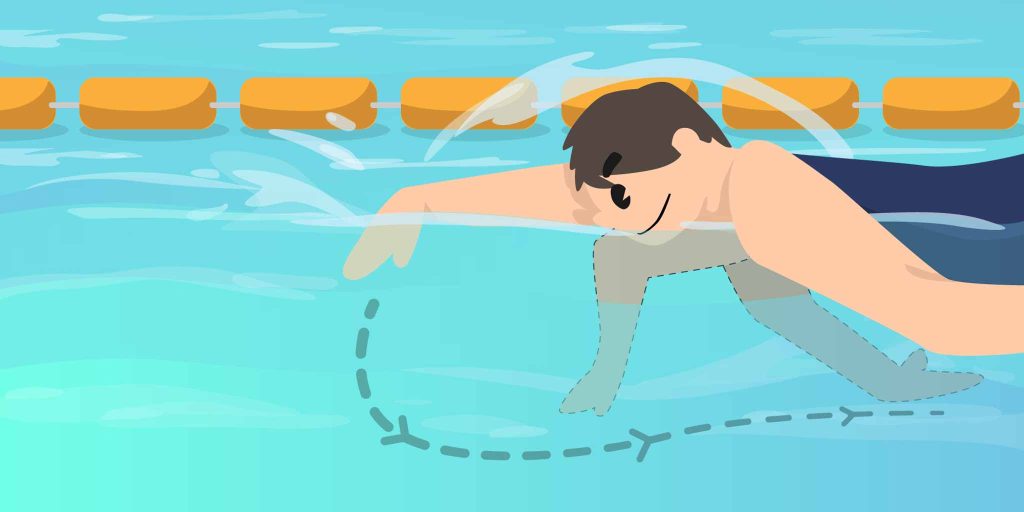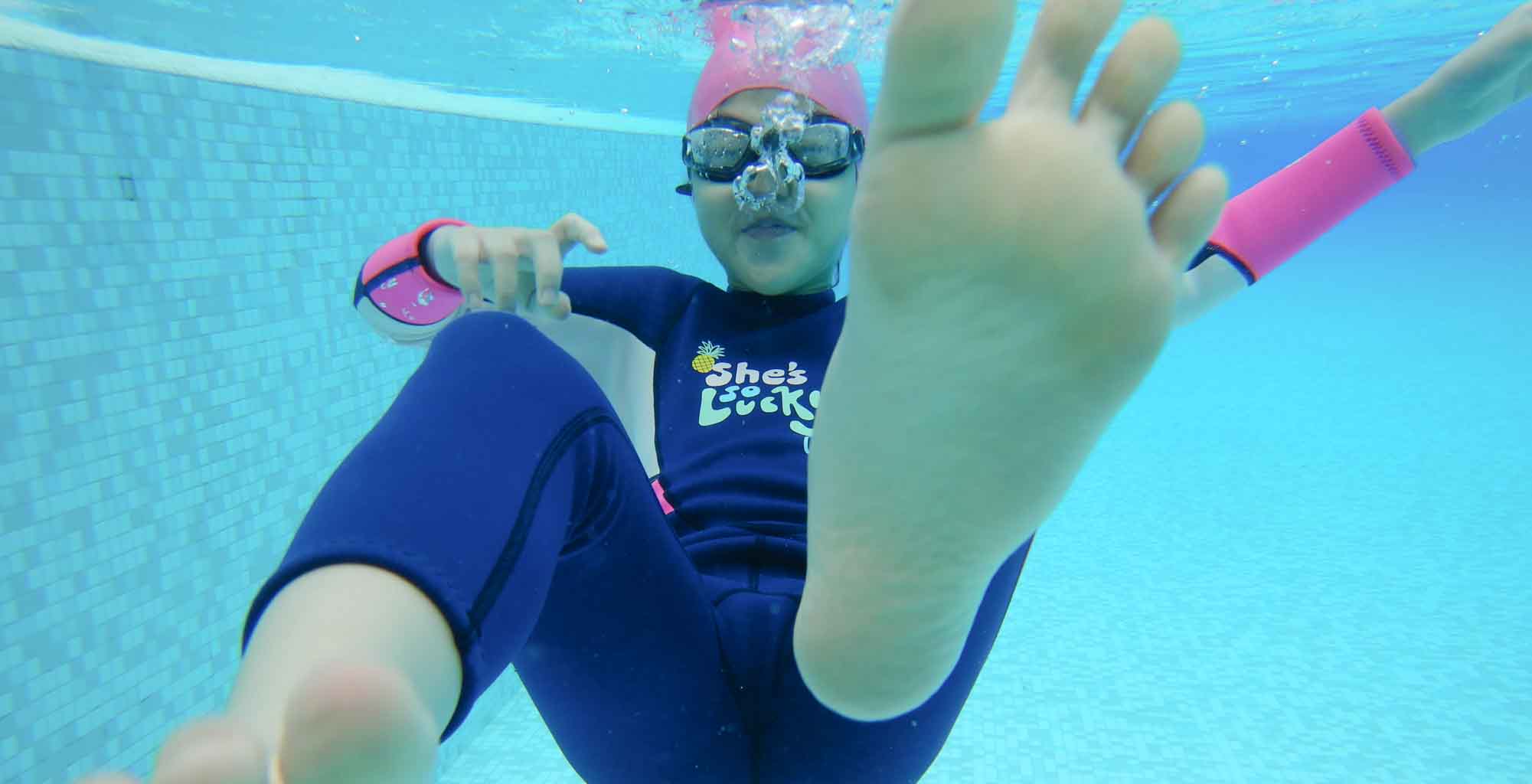
Almost every swimmer wants to improve their freestyle strength and efficiency. Who wouldn’t want to improve their speed in swimming’s quickest stroke? But, if you want to keep up with the sport’s finest swimmers, it’s all about honing those minor intricacies like arm stroke and leg kick.
One of the most crucial aspects of your freestyle stroke occurs in the water, and it all starts with how your hand enters the water’s surface. A solid freestyle catch and pull might result from a good hand entry. It starts your freestyle technique’s most time-consuming and results-oriented phase.
In this tutorial, we’ll experiment to see if your freestyle hand entry could be improved. We’ll also advise you and show you some of the most common faults that might damage your swim stroke. A flawless freestyle swim is the sum of its components, and several drills can help you develop your freestyle on every section of the stroke.
How to improve your hand entry for freestyle swimming
So, now that you know what works to help you improve your front crawl, here are some tips on improving your freestyle hand enter to save those precious seconds.
Using Finger Paddles
Finger paddles are a great tool because they lighten the load on your shoulders and let you focus on the catch, grip, and pull.
Wear Finger Paddles and try the “Zip-Up Freestyle technique” to improve your freestyle stroke:
- Put your arms together in front of you to start.
- Start your stroke with just one arm and focus on the pull and push phases.
- When your arm is stretched to your body, focus on the return and keep your elbow high. Think of it as a zipper that closes the stroke you now have in front of you.
If it’s safe to do so, the next time you’re a passenger in a car (hopefully on your way to the pool), roll down the window and put your hand out. Play around with your hand and imitate each part of the stroke, like putting your little finger out. As the air pushes against your hand, you’ll get a good idea of the surface area.
Try Sculling
Sculling is a great way to improve your hand entry and a steady path to warm up before swimming freestyle. In addition, it’s a very low-impact move you can do in the water as part of your exercise.
- With your arms stretched out in front of you and your body flat on the ground, make a circular motion with your hands by only moving your wrist and upper arm, as if waving in the water.
- Keep your body flat and make as little contact as possible with the water. Even a snorkel will work.
- Your legs should stay still, but you can use them or a pull buoy as support until you feel ready.
Lastly, to improve your hand position, film yourself underwater as you move your fingers around and pay attention to how it feels. You’ll see that with consistent practice, your fingers will be much better positioned, making your stroke much better.
This is a big investment, but you can film underwater without worry if you buy an action camera like a GoPro and a suction mount.
Don’t Make These Hand Entry Mistakes.
It doesn’t help to try new things and play to improve your freestyle if you make small mistakes that hurt your stroke technique. Let’s look at the most common mistakes swimmers make when entering the water with their hands for freestyle.
Relaxing Your Hands Soon After Entry
Every good swim teacher knows that staying aware throughout the whole swimming stroke is a hard but important skill to learn.
At the beginning of the arm recovery part of your freestyle stroke, you must ensure your hands are relaxed. But if your hand goes into the water and you don’t move it, it could lead to three problems: You can spread your fingers apart, bend your wrist backward, or turn your whole hand to the side. These problems reduce the space and can even change the body’s position.
Hitting Water Too Soon
We all know that water is much heavier than air, so it slows us down more when it hits our bodies. But when most people are taught how to swim, they are told to put their hands in the water with their elbows bent just above their heads and push them forward before starting the pull action. This may seem normal, but it means your hands and arms are in the water longer than needed.
Keeping your body out of the water longer will reduce drag and let you swim faster and more efficiently. A fully stretched arm that goes into the water away from your head will work much better.
Swimming Zig Zag Laps
Pool swimming isn’t like NASCAR because every event involves going in a straight line from one side of the pool to the other. Your front crawl is in danger if anything gets in the way of that. If you reach too far for the hand entry, your hand will end up next to your head instead of where it should be, on your shoulder. This will make your left and right arms fight over which way to go, making you spin in the water.
During your freestyle hand entry, keep your hands aligned with your hips. This will keep your body in a straight line.
Pay Attention To How You Move
Getting your form right is one of the hardest things about swimming. You can do as much HIIT as you want, get the best gains in strength, and exercise as much as an endurance athlete. But you still have to learn all the little details of your move. Being in great shape isn’t enough.
There is a lot of information out there that can help you fix the little problems that might be driving you crazy. You can also add tools to your workouts, like floating devices and snorkels, that help you focus on certain body parts.
Read, watch, learn, practice, and practice again. You’ll soon be able to swim with your hands like a pro.
Armpit Lift
The Objective Of This Drill
- Balancing the recovery and stroking arms
- Using core leverage to create a uniform stroke
How To Perform This Drill
Step 1: Push off the wall in preparation for the backstroke, maintaining a straight spine, a good water line, and a productive kick. Create opposition. Each stroke should be rolled into and out of.
Step 2: As your recovered arm nears the arch’s peak over the water, roll your opposite shoulder down lower into the water and pull your armpit out. Maintain a locked elbow and a hand positioned over your shoulder. Allow your armpit to submerge again as your recovering arm approaches the entry point beyond your shoulder.
Step 3: Do the same thing with the other arm. Lifting your armpit at the top of the recovery arch changes the arm you use to stroke underwater. Lifting your shoulder gives your other arm the right amount of balance. This lets your other arm switch from the pull phase to the push phase of the stroke, giving your arm a lot of speed at the end of the stroke.
Step 4: Continue stroking, lifting your armpit out of the water during the highest section of the arch with each recovery. Continue swimming numerous lengths of the pool until the movement of lifting your armpit balances the stroking arm’s activities. The arms are working together but in separate directions.
Chart Of Drill Feedback
Problem: When I elevate my armpit, I sink.
Modification: It appears that your arms are not balancing each other. When you elevate the armpit of your recuperating arm, your other arm should be bent at the elbow at about a straight angle, with your elbow high and stable. That hand should be picking up pace and pushing toward your feet. Your stroke will not benefit from the armpit lift in any other relationship.
Problem: The issue is that my feet fishtail.
Modification: Keep your recuperating arm aligned with its exit point and the same side shoulder. At 12:00, avoid entering the water with your hand. Overreaching like this will throw your alignment off and cause you to fishtail.
Problem: The issue is that this causes my stroke to pause.
Modification: Consider it a transition rather than a stop. Both the recovering and underwater arms are moving at the point of the armpit lift. There should be no pause, only a sense that the arms balance each other and act in unison.


